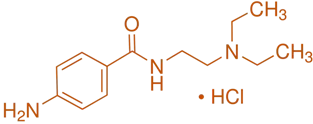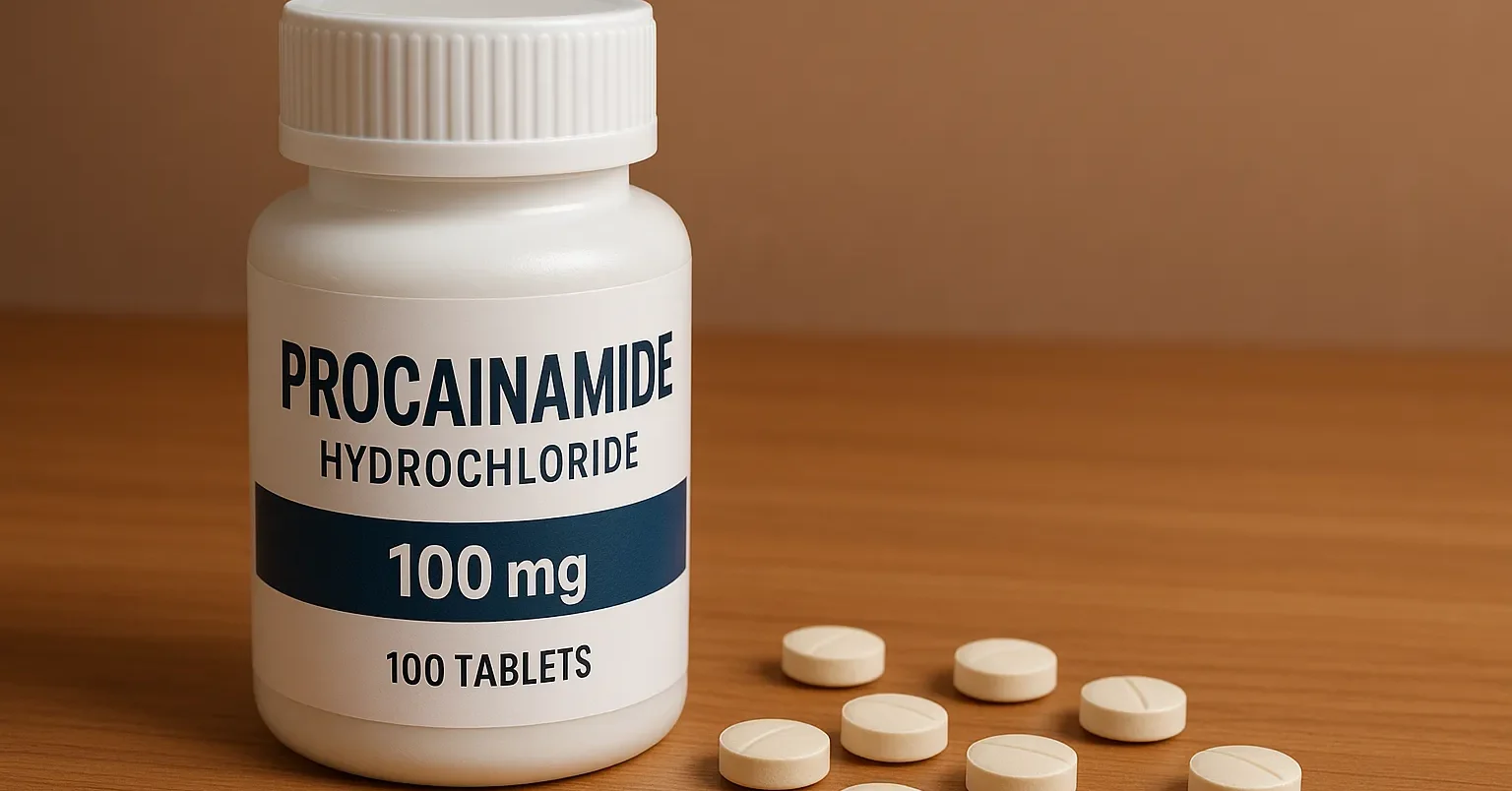Procainamide Hydrochloride is a class Ia anti-arrhythmic that treats arrhythmias by blocking sodium channels and slowing impulses.
Structure of Procainamide Hydrochloride
- Procainamide hydrochloride is a class IA antiarrhythmic agent structurally related to the local anesthetic procainamide.
- It contains an amide linkage with a diethylamino group and a phenyl ring.
- Chemical Formula: C₁₉H₃₀N₄O₂S·HCl

Mode of Action
- Class IA Antiarrhythmic: Blocks fast sodium channels, prolongs the action potential and refractory period.
- Potassium Channel Blockade: Extends repolarization by inhibiting potassium efflux.
- Ventricular and Atrial Myocytes: Slows phase 0 of the cardiac action potential, reducing excitability.
- Effect on Heart Rate: Converts atrial fibrillation to sinus rhythm and prevents reentrant arrhythmias.
Advertisements
Uses
- Ventricular Arrhythmias: Treats ventricular tachycardia and ventricular fibrillation.
- Atrial Arrhythmias: Manages atrial fibrillation and atrial flutter.
- Reentrant Arrhythmias Prevention: Effective in preventing recurrence post-cardiac events.
- Antiarrhythmic Prophylaxis: Used after myocardial infarction to prevent arrhythmias.

